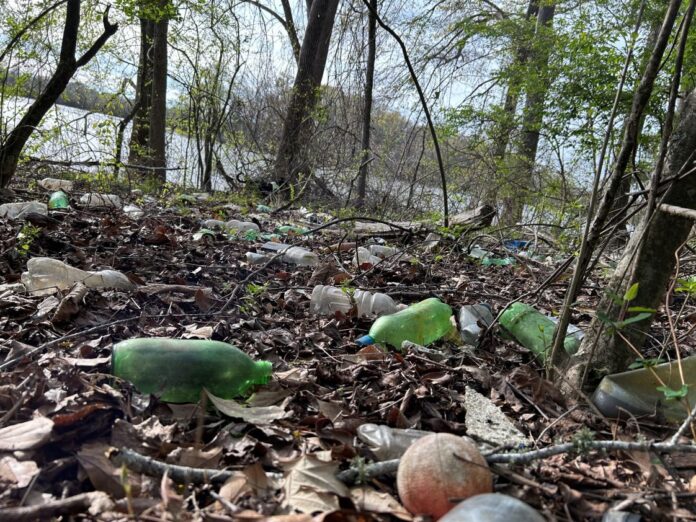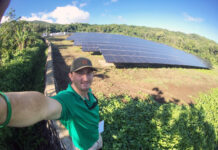While plastic was invented in 1909, it did not become popular until Tupperware was invented in 1946. The creation of this novel product brought plastics to the forefront as an affordable, durable, lightweight product that could be used for many things. By 1976, plastics were the most used material in the United States. Unfortunately, many of these products are single-use, short-lived, or destined for landfills quickly after they are produced.
The problem with plastics
The Environmental Protection Agency reported that in 2018, Americans produced 35.7 million metric tons of plastic waste. Of that material, 3.1 million metric tons (8.7%) were recycled, and 5.62 million metric tons (15.8%) were incinerated through combustion. The rest, 27 million metric tons (75.5%), ended up in landfills or other places in our environment.
Plastic breaks down very slowly unlike food or other organic waste that quickly decomposes. It could take over 1,000 years for large pieces of plastic to break down into smaller pieces called secondary microplastics. In the environment, these plastics can be problematic for wildlife, insects, soils, groundwater, and humans.
Plastic pollution
In the environment, plastics can accumulate in areas like ocean floors and shorelines. While much of this plastic pollution was initially produced on land as litter, the elements like rain and the wind move the material into streams, lakes, and oceans. This plastic pollution is unsightly, but it is even more troubling for wildlife. Many animals, including birds, fish, and land animals, confuse plastic pollution for food and ingest it. Unfortunately, it can lodge in their digestive tracts, causing blockages, bleeding, or perforations of the gut. Additionally, they may become entangled in plastics such as fishing lines or plastic bags, which impact their ability to feed and possibly cause injuries or even suffocation.
Plastic degrades very slowly unlike food or other organic waste that quickly decomposes. Large pieces of plastic could take over 1,000 years to break down into smaller pieces called secondary microplastics. In the environment, these plastics can be problematic for wildlife, insects, soils, groundwater, and humans.
Another source of secondary microplastics is the frequent washing of synthetic fabrics, including polyester, nylon, and acrylic clothing. Washing causes microfibers to dislodge from the clothing and move into wastewater where they are difficult to remove.
Microplastics have been found worldwide on land and in the ocean, in animals, and humans. They can bioaccumulate in animals and negatively impact food webs. Additionally, microplastics can absorb toxic chemicals, especially persistent organic pollutants, that can further contaminate soils and waterways.
What can I do to help?
While the issue of plastic pollution is overwhelming, there are some things you can do to help.
- When shopping, choose items in recyclable or biodegradable containers. Bring reusable bags when shopping.
- When possible, choose reusable instead of single-use items, including cups, utensils, and straws. Look for clothing made from organic fibers, such as cotton, wool, or linen instead of those made with synthetic fibers.
- Help keep our environment clean by picking up litter.
- Lastly, work with youth to help them understand the problems plastic can cause in the environment. Help them to make choices that are beneficial to the environment.
While plastic pollution in the environment is a big problem, every little change you make will help.
For more information on plastics in the environment, check out our Eco-Friendly Friday session ‘Microplastics: Tiny pollutant, big problem’ with University of Illinois Extension Pollution Prevention Extension Specialist Sarah Zack.

























